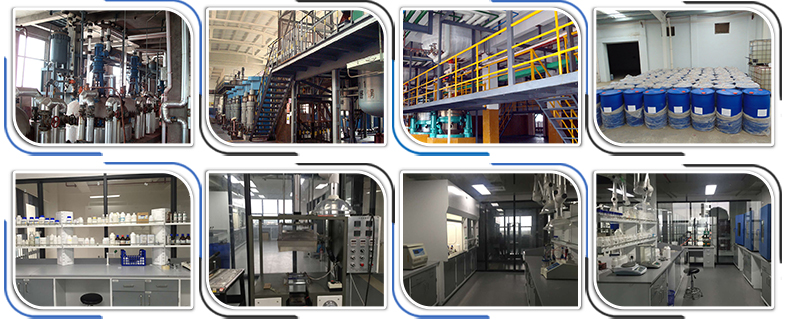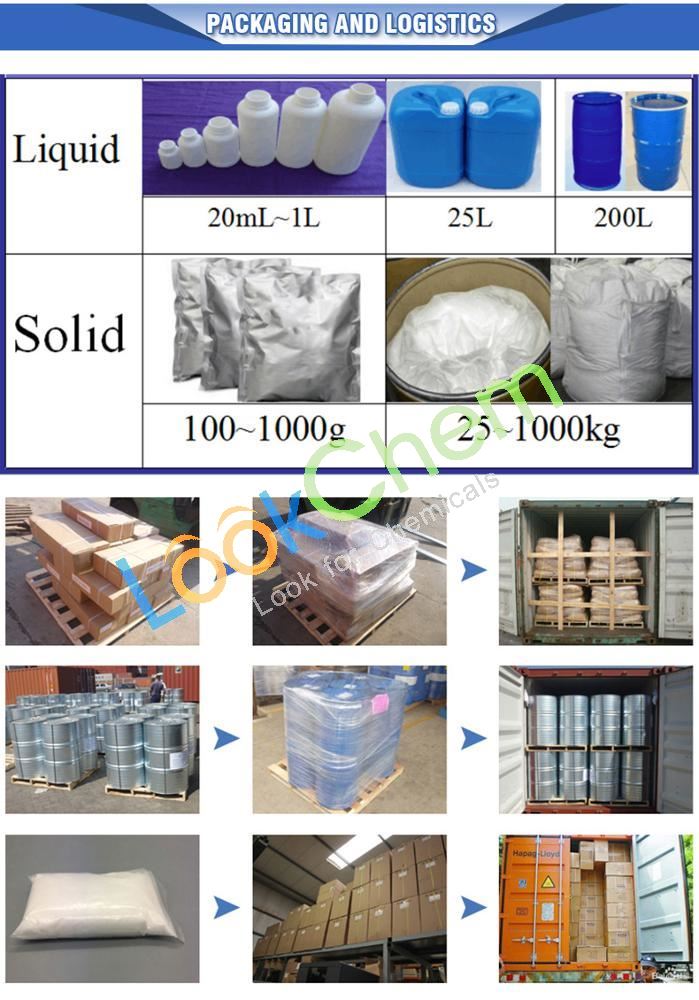- Min.Order :25 Kilogram
- Purity: 99%
- Payment Terms : L/C,D/A,D/P,T/T,,MoneyGram,Other
Keywords
Ammonium metavanadate 7803-55-6 H4NO3V
Quick Details
- Appearance:White to yellow solid
- Application:raw material
- PackAge:As required
- ProductionCapacity:5|Metric Ton|Month
- Storage:Dry and cold condition
- Transportation:by sea or by air
Superiority:
Changzhou Xuanming Chemical Co., Ltd. is dedicated to the technology development, manufacturing, import and export chemicals, which are specialized in pharmaceutical intermediates, pesticide intermediate, industry of fine chemicals and custom synthesis. Now, we enjoy good reputation among customers and take favorable market share in domestic and at abroad.
Changzhou Xuanming Chemical CO., LTD is located in Northern Jiangshu Industry Park, we have modern manufacture bases and some laboratories, which can supply the key intermediate for your projects, and short your synthesis scheme and supply you a reference compound for bioassay or a high purity analytical standard. We have been abided by “treat technology as first, quality as basis, customers as God, and be honest and sincere”. It is our final aim to provide environmental and high technological products and meet customers’ requirements according to keep effors on developing new chemical fields.
Changzhou Xuanming Chemical CO., LTD promises to help you with heart and soul.


Details:
Details:
| Ammonium metavanadate Basic information |
| Product Name: | Ammonium metavanadate |
| Synonyms: | vanadicacid,ammoniumsalt;AMMONIUM METAVANADATE;AMMONIUM M-VANADATE;AMMONIUM MONOVANADATE;AMMONIUM OXIDE;AMMONIUM VANADATE;AMMONIUM VANADATE(+5);AMMONIUM VANADATE, META |
| CAS: | 7803-55-6 |
| MF: | H4NO3V |
| MW: | 116.98 |
| EINECS: | 232-261-3 |
| Product Categories: | Industrial/Fine Chemicals;Inorganics;ACS GradeChemical Synthesis;Catalysis and Inorganic Chemistry;Essential Chemicals;Routine Reagents;Vanadium;A-B, Puriss p.a. ACS;Analytical Reagents for General Use;Puriss p.a. ACS;Ammonium SaltsChemical Synthesis;Metal and Ceramic Science;Salts;Ammonium Salts;-;Chemical Synthesis;A-B, Puriss p.a.;Puriss p.a.;inorganic compound |
| Mol File: | 7803-55-6.mol |
|
|
|
| Ammonium metavanadate Chemical Properties |
| Melting point | 200 °C |
| density | 2.32 g/cm3 at 25 °C(lit.) |
| storage temp. | Store at RT. |
| solubility | H2O: soluble |
| form | Solid |
| color | White to yellow |
| Specific Gravity | 2.33 |
| PH | 7 (5.1g/l, H2O, 20℃) |
| Water Solubility | 5.1 g/L (20 ºC) |
| Merck | 14,568 |
| Stability: | Stable. Incompatible with strong acids, strong oxidizing agents. Protect from moisture - hygroscopic. |
| CAS DataBase Reference | 7803-55-6(CAS DataBase Reference) |
| EPA Substance Registry System | Ammonium vanadate (7803-55-6) |
| Safety Information |
| Hazard Codes | T+,T |
| Risk Statements | 25-26-36/37/38-20-34-22-36/37-23/24/25 |
| Safety Statements | 26-36/37/39-45-37/39-22-28 |
| RIDADR | UN 2859 6.1/PG 2 |
| WGK Germany | 3 |
| RTECS | YW0875000 |
| F | 3 |
| TSCA | Yes |
| HazardClass | 6.1 |
| PackingGroup | II |
| HS Code | 28419030 |
| Hazardous Substances Data | 7803-55-6(Hazardous Substances Data) |
| Toxicity | LD50 orally in rats: 0.16 g/kg (Smyth) |
| Ammonium metavanadate Usage And Synthesis |
| Description | Ammonium metavanadate can be used as a catalyst for organic synthesis. Thermal decomposition of ammonium metavanadate yields vanadium pentoxide, V205, which is widely used as catalyst and precursor for other vanadium compounds and metallic vanadium itself. Ammonium metavanadate is a reagent in the analytical chemistry and a developer in the photography industry. Ammonium metavanadate is used in dyeing and printing in the textile industry. Ammonium metavanadate is also used as dryer for paints. |
| References |
[1] Kirti S.Niralwad, Bapurao B.Shingate and Murlidhar S.Shingare, Microwave-assisted one-pot synthesis of octahydroquinazolinone derivatives using ammonium metavanadate under solvent-free condition, Tetrahedron Letters, 2010, vol. 51, 3616-3618 [2] Ganesh R. Jadhav, Mohammad U. Shaikh, Rajesh P. Kale, Charansingh H. Gill, Ammonium metavanadate: A novel catalyst for synthesis of 2-substituted benzimidazole derivatives, Chinese Chemical Letters, 2009, vol. 20, 292-295 [3] Swapnil S. Sonar, Amol H. Kategaonkar, M. N. Ware; Charansingh H. Gill, Bapurao B. Shingate and Murlidhar S. Shingare, Ammonium metavanadate: an effective catalyst for synthesis of α-hydroxyphosphonates, ARKIVOC, 2009, vol. 2009, 138-148 [4] Klaus-Jürgen Range and Reinhard Zintl, The thermal decomposition of ammonium metavanadate (V) in open and closed systems, Zeitschrift für Naturforschung B, 1988, vol.43, 309-317 [5] Jeanne Mager Stellman, Encyclopaedia of Occupational Health and Safety: Chemical, Industries and Safety, 2012 [6] NPCS Board of Consultants & Engineers, Selected Formulary Book on Inks, Paints, Lacquers, Varnishes and Enamels, 2007 |
| Chemical Properties | white or slightly yellow powder or crystals |
| Chemical Properties | Ammonium metavanadate is a white or slightly yellow crystalline powder. It is an inorganic acidic salt |
| Uses | Used in combustion analysis of carbon, hydrogen, and nitrogen |
| Uses | In dyeing and printing on woolens; staining wood black; manufacture of vanadium black and "indelible ink"; producing vanadium luster on pottery; as photographic developer; in hematoxylin staining in microscopy; as reagent in analytical chemistry. |
| General Description | A white crystalline powder. Slightly soluble in water and denser than water. Decomposes at 410°F. May release toxic fumes. Moderately toxic. An irritant. Used as a dryer for paints and inks, and for dyes. Loses ammonia upon heating. |
| Air & Water Reactions | Slightly soluble in water. |
| Reactivity Profile | Acidic inorganic salts, such as Ammonium metavanadate, are generally soluble in water. The resulting solutions contain moderate concentrations of hydrogen ions and have pH's of less than 7.0. They react as acids to neutralize bases. These neutralizations generate heat, but less or far less than is generated by neutralization of inorganic acids, inorganic oxoacids, and carboxylic acid. They usually do not react as either oxidizing agents or reducing agents but such behavior is not impossible. Many of these compounds catalyze organic reactions. |
| Health Hazard | TOXIC; inhalation, ingestion or skin contact with material may cause severe injury or death. Contact with molten substance may cause severe burns to skin and eyes. Avoid any skin contact. Effects of contact or inhalation may be delayed. Fire may produce irritating, corrosive and/or toxic gases. Runoff from fire control or dilution water may be corrosive and/or toxic and cause pollution. |
| Fire Hazard | Non-combustible, substance itself does not burn but may decompose upon heating to produce corrosive and/or toxic fumes. Some are oxidizers and may ignite combustibles (wood, paper, oil, clothing, etc.). Contact with metals may evolve flammable hydrogen gas. Containers may explode when heated. |
| Safety Profile | Poison by ingestion, subcutaneous, intravenous, intratracheal, and intraperitoneal routes. Moderately toxic by skin contact. An experimental teratogen. Other experimental reproductive effects. Mutation data reported. See also VANADIUM COMPOUNDS. When heated to decomposition it emits toxic fumes of NH3, VOx, and NOx. |
| Potential Exposure | It is used in the metals industry to make alloys, chemical reactions, dyes, inks, varnishes, printing, medicines, and photography. |
| Shipping | UN2859 Ammonium metavanadate, Hazard Class: 6.1; Labels: 6.1-Poisonous materials. |
| Purification Methods | Wash the salt with H2O until free from Cl-ions and dry it in air. It is soluble in H2O (5.18g/100mL at 15o, 10.4g/100mL at 32o) but is more soluble in dilute NH3. It crystallises from conductivity water (20mL/g). When heated at relatively low temperature, it loses H2O and NH3 to give vanadium oxide (V2O5), and at 210o it forms lower oxides. [Baker et al. Inorg Synth III 117 1950.] Its solubility in H2O is 0.52% (15o), 1% (32o) and 1.6% (50o). After washing the technical grade salt with H2O, it had Na, Mn and U at 0.06, 0.2 and 0.1 ppm, respectively. [Brauer in Handbook of Preparative Inorganic Chem (Ed. Brauer) Academic Press Vol II p 1272-1273 1965.] |
| Incompatibilities | Moisture forms an acidic solution. React with bases and alkaline material: may generate heat and release flammable hydrogen gas. |
Packing:


You Might Also Like
-
High quality Caronic anhydride
CAS NO:67911-21-1
-
High quality Pymetrozine
CAS NO:123312-89-0
-
High quality Pirfenidone
CAS NO:53179-13-8
-
High quality 2-Hydroxy-5-methylpyridine
CAS NO:1003-68-5
-
High quality 2-Amino-5-methylpyridine
CAS NO:1603-41-4
-
Hot sell,Hight purity,Best price, CAS: 151533-22-1 / Calcium levomefolate
CAS NO:151533-22-1
Related Searches
About|Contact|Cas|Product Name|Molecular|Country|Encyclopedia
Message|New Cas|MSDS|Service|Advertisement|CAS DataBase|Article Data|Manufacturers | Chemical Catalog
©2008 LookChem.com,License: ICP
NO.:Zhejiang16009103
complaints:service@lookchem.com Desktop View